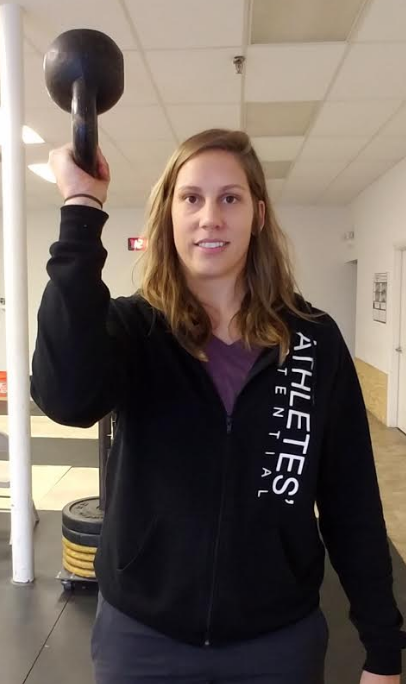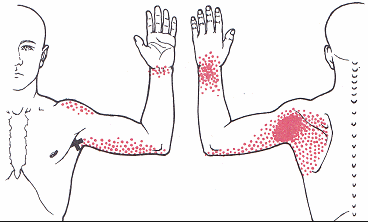Dominating the Court: Kick Shoulder and Elbow Pain For Good
Feb 01, 2017The elbow is affected so often by tennis that it was named after the sport! Tennis elbow, or lateral epicondylalgia, is pain at the outside part of the elbow. Its sibling, golfer’s elbow, is pain at the inside of the elbow. Despite the names, tennis players are susceptible to both.
Many times, the treatment will focus solely on the elbow. Decreasing inflammation, resting the muscles that insert at the painful area and strengthening can all be helpful, but what is the root of the issue? Something that can be overlooked is shoulder dysfunction causing pain down the kinetic chain. Check out the picture of the athlete serving below. The arm acts as a whip-- drawing the hand back and then unraveling with force the whips the elbow forward so the hand and racquet will follow. If the shoulder lacks the proper stability in these end ranges and with quick change of direction, the elbow takes the force.
We want our shoulders to be strong through the stroke but it starts with being strong as stabilizers. An easy go-to for shoulder stability are carry variations. Farmer's carry (see video below) and overhead carry are great places to start, then you can try a waiter’s carry. This moves the weight out front so that there is more stress to the shoulder musculature. If you try this variation with a kettlebell and hold it bottoms-up (see picture below video) it will be more challenging and work on grip strength! As you get tired, your elbow will tend to drift outward and down, so walk while stabilizing the bell only as long as you are able to keep the correct form.

Movement must be added to make it effective for the tennis player. The control of the arm to accelerate and then quickly decelerate comes from the posterior rotator cuff. Those muscles at the back of the shoulder put the brakes on the arm; without control here, again the elbow suffers but you may also feel pain in the back of the shoulder.
A very effective protocol is banded rotator cuff strengthening in multiple different angles. My two favorite are the WY Negative and the Snow Angels:
The WY negative strengthens the external rotators, demands stabilization overhead with arms straight and requires posterior cuff control as your lower slowly. No other banded exercise that I have seen is as effective and comprehensive for the tennis athlete. The best band tension to use for this exercise is 3-7#, so much lighter than you might imagine! Around 10-20 repetitions at a time is a great goal, although you may need a break or two when you first start.
Another great shoulder stability exercise is the Snow Angel. Again, with the light band and perform 10 repetitions at a time. This exercises forces you to pull back on the band and sustain tension while moving overhead and back down. Try it out!

The subscapularis is one of the rotator cuff muscles that tends to be largely ignored but can be a culprit in shoulder pain with overhead athletes. When it is tight, it will limit external rotation, or the ability to bring your arm back to serve. It can cause pain at the back of the shoulder and sometimes that back of the wrist! The easiest way to get pressure and a stretch on the muscle is with a lacrosse ball. Check out the Subscap Smash (see video below). This is a great mobilization to add your warm ups or workout routine during tennis season.
The big picture here is that elbow pain is often a secondary symptom due to a primary cause at the shoulder. Direct trauma and inflammation to the elbow itself are possible but ensuring a strong foundation at your shoulder will protect the elbow joint over the long run. Try out these mobility pieces for a week or two and note any change that you have in your performance or symptoms. If you continue to have shoulder or elbow pain, reach out to us at Athletes’ Potential. We would love to get you back on the court pain-free!
Thanks for reading,
Dr. Jackie, PT, DPT
Let us help you figure out to live your best active life today!
Remember, Movement is Medicine!

